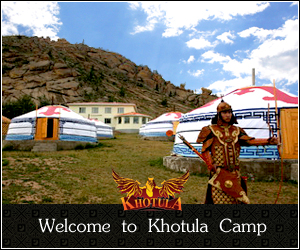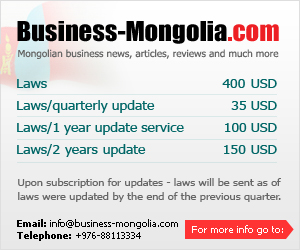Mongolian Goats
The Mongolian goat is a beneficial livestock that has high effectiveness and independent capabilities. Goats account for 20 percent of Mongolian livestock. But since 1990 numbers of ox have increased substantially, horses increased a little, sheep decreased, camel stayed the same but goats increased by leaps and bounds.
In 1990 there were 5 million goats, the present day this number has reached 12-15 million and accounts for 40-50% of livestock. It has originated from the demands of foreign merchants. Herdsmen satisfied those merchants’ demands so as to make a living because the government does not carry out proper policy towards herdsmen.
Goats have a few breeds that produce milk and cashmere. The reason for only a few breeds is from early time people were not interested in keeping goats because goats ravaged pastureland. Mongolian herdsmen used methods not to ravaged pastureland by keeping the goats at a manageable level. It is very regrettable that this condition has failed. Mongolian scientists created a breed named the Gobi gurvan saikhan and in recent years herdsmen are keeping angora goats in Mongolia.
Breeds of angora, cashmere, swiss and milk are famous. The goats specialty of cashmere has been kept in Asia. China and Mongolia prepare most of the world’s goat cashmere production. Mongolia takes the first place of goats per person and 5th place in total number of goats. The cashmere of the Mongol breeds are valued highly but herders can only take 300-1200 gram cashmere from one goat. It seems like very little. But the Mongol goat not only gives cashmere, but also meat and milk and does not require special farming animal husbandry. It has very important to keep Mongolian livestock used to extreme climate and pasture condition with relatively sparse plants.
The Mongolian goat economy is an important sector, giving over 3000 cashmere and hair, thousands of tons of meat and great amounts of leathers and milk. Mongolia prepares more than 1/3 percent of fine cashmere of the world. Each year a goat’s milk production averages 50-80 liter. Goat milk is superior of fat, protein and calories than cow and nutritious for children.
12-18kg meat and 2-3kg fat can be taken from a slaughtered goat. The protein content of goat meat is higher than that of mutton. Various goods are made from the leather of goats. It is a worry that Mongolian pastureland is being ruined by the increasing numbers of goats. The delicate region of the Gobi is in danger to become the central part for goats because they like hot climate. Goats gnaw off all grass and plants without hope to be regenerated and kill the soil. Scientists wrote that goats made South Europe, with great numbers of forests, dry like Africa and the Near East. If the condition is still the same as the present day that regrettable events may occur in Mongolia.













i want to know production status and cahemere quality of diffrent mangolian breeds and source to purchase them
tasleem